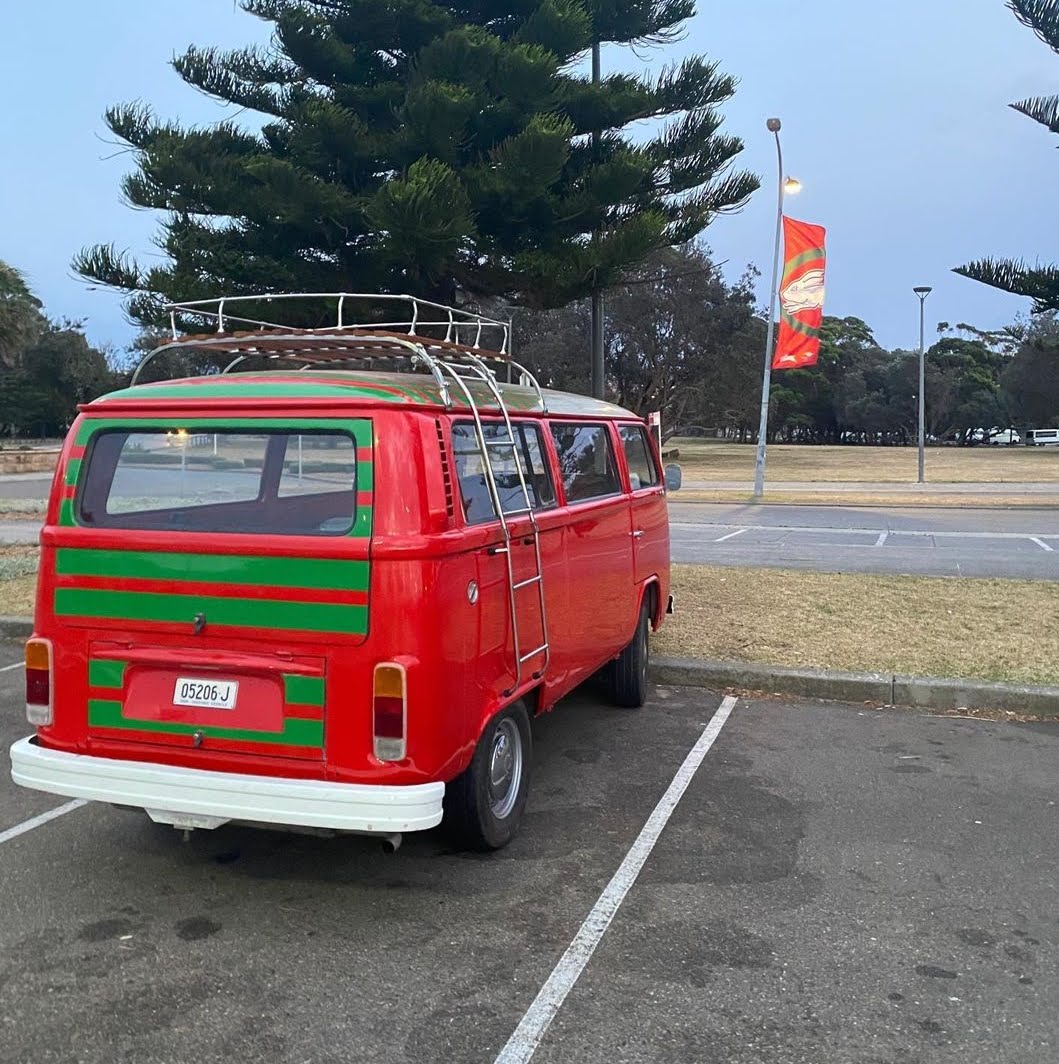I’m sure this post will be incredibly useful to many of you. Let’s be honest, most of us don’t drive our Kombis as much as we should, especially during the colder months. This often means our buses can sit idle for months on end. As I always say, the best thing you can do for your Kombi is to take it out regularly, but I get that it’s not always practical. If your Kombi is going to sit for an extended period, it’s crucial to store it properly. Consider this post a bit of a friendly warning, but if you’re looking for more detailed advice, feel free to reach out to us.

It might seem obvious, but the ideal way to store your Kombi is in a dry garage, preferably in a dry climate. Of course, that’s easier said than done, especially for those living near the coast or without a garage. So, what can you do instead? Over the years, I’ve seen many people think that a waterproof car cover is just as good as a garage. Unfortunately, that’s not really the case. Right now, we have a perfect example in the shop of what can go wrong when storing a Kombi under a cover.

The last time we saw this bus, it wasn’t in bad shape at all. There was some minor rust bubbling under the windscreen and on the rear roof. We advised the owner to address it sooner rather than later, but if the budget didn’t allow it, they could keep an eye on it since the bus was used regularly.
Unfortunately, life happens, and the owner had some personal issues that required them to store the Kombi for about nine months without access to a garage. Their solution, which is probably what many would do, was to park it outside under a waterproof car cover. So, why is that a problem? Well, even though the cover might keep off light rain, it’s not as effective in heavy rain. More importantly, it doesn’t allow the Kombi to breathe. Without proper ventilation, moisture gets trapped underneath, turning it into a greenhouse and creating the perfect environment for rust to thrive. And if you’re near the coast, the moist air is salty, adding insult to injury.

So, what’s the solution? If you need to store your bus and don’t have a garage, you can still use a cover, but it’s essential to remove it during dry weather, wash your bus, and let it dry out before covering it again. And make sure the cover itself is dry when you put it back on. The cover will protect your Kombi from dirt and debris, which is great, but if you don’t give it a chance to dry out on those warm, sunny days, you might be in for a nasty surprise when you finally uncover it.
So, what’s next? Well, now we need to tackle the rust repairs. This will involve a rear corner roof cut from a donor bus and replacement sections for the front nose, both inner and outer. It’s going to be a big job—rust repairs always are—but it’s nothing we can’t handle. After all, it’s worth putting in the effort to keep as many of these old beauties on the road as possible.

